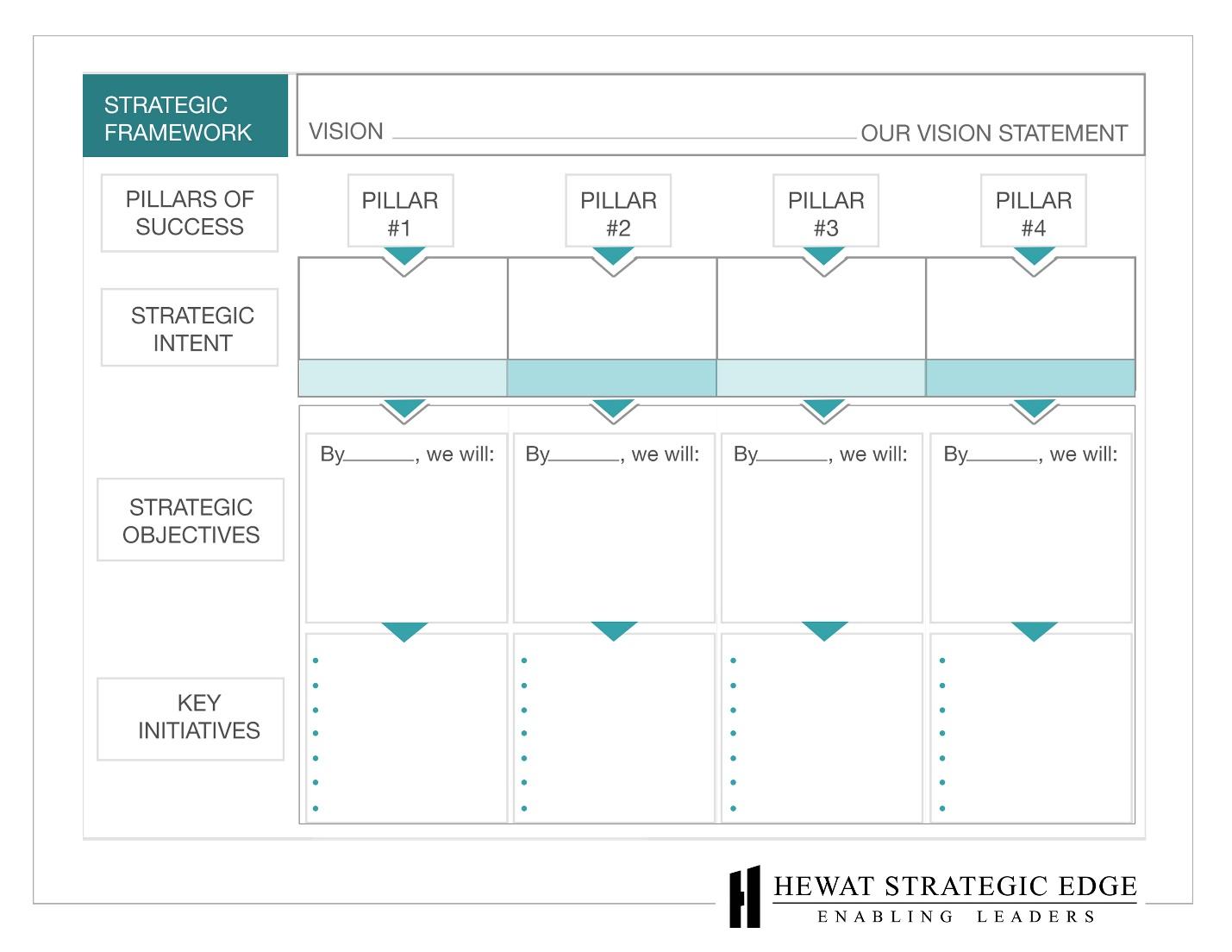When we are building a strategic framework with our clients, the first accomplishment is the refinement of an existing Vision Statement or the creation of a new one. What flows from the Vision Statement are Pillars of Success, Strategic Objectives, Measures and Key Initiatives.

This article focuses on the Vision Statement – what it is and why it is important.
Our definition of a Vision Statement is the following: a short, public declaration, about what you want to be able to say is true about the organization, at a certain point in time.
Let’s look at each element of that definition.
- It needs to be short so that it can be read and be remembered. We cannot act on a statement that we do not remember, or we do not understand. We are creating this statement so that everybody in the organization will be informed.
- It is a public declaration – The Vision Statement is something that you are boldly committing to. It permits shareholders, customers, suppliers and other stakeholders appreciate your organization’s aspirations. Employees are more likely to buy into something the whole world is being told about.
- What you want to be able to say is true, refers to the attributes of the organization that will drive your success. This speaks to both the values that will drive individual and organization-wide behavior, as well as competencies which will be developed and that will be on full display. The Pillars of Success will describe those values and competencies, in a way that will provide focus to drive results.
- Finally, at a certain point in time, let’s the reader understand that the vision is future-oriented and there is a completion date. Planning and implementation must recognize the need to achieve results by a certain date. The Strategic Objectives will inform the reader about the specific ways in which the organization will measure results at a certain point in time. Measures will track the required progress along the way.
So, who needs a Vision Statement? We at Hewat Strategic Edge believe all organizations can benefit from the development of a Vision Statement. But it must be linked to the other elements of a Strategic Framework, have been noted above.
Use it or lose it.
Too often the Vision Statement gets a bum rap because they are too often developed and then not used. It is true that Vision Statements have a lot in common with exercise machines – everyone’s got one, but few are using them. That’s a shame because they can be very instrumental in organizational change and driving success. When employees know, understand and believe in the Vision for the organization and then are equipped with the resources to chase that vision, powerful progress can be achieved. Employees need to understand the difference between vision-driven behavior and non-vision-driven behavior.
Moreover, at the end of the day, the leadership team must make the Vision Statement a touchstone for decision-making. All decisions should be put through the filter – will this take us closer or further away from achieving the vision we have set for ourselves?
With that approach, all organizations can benefit from a Vision Statement.

